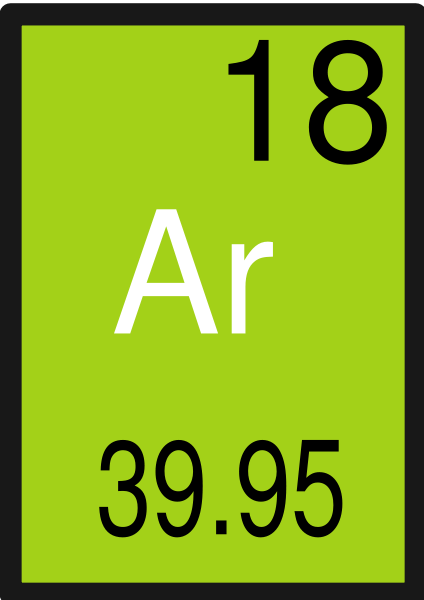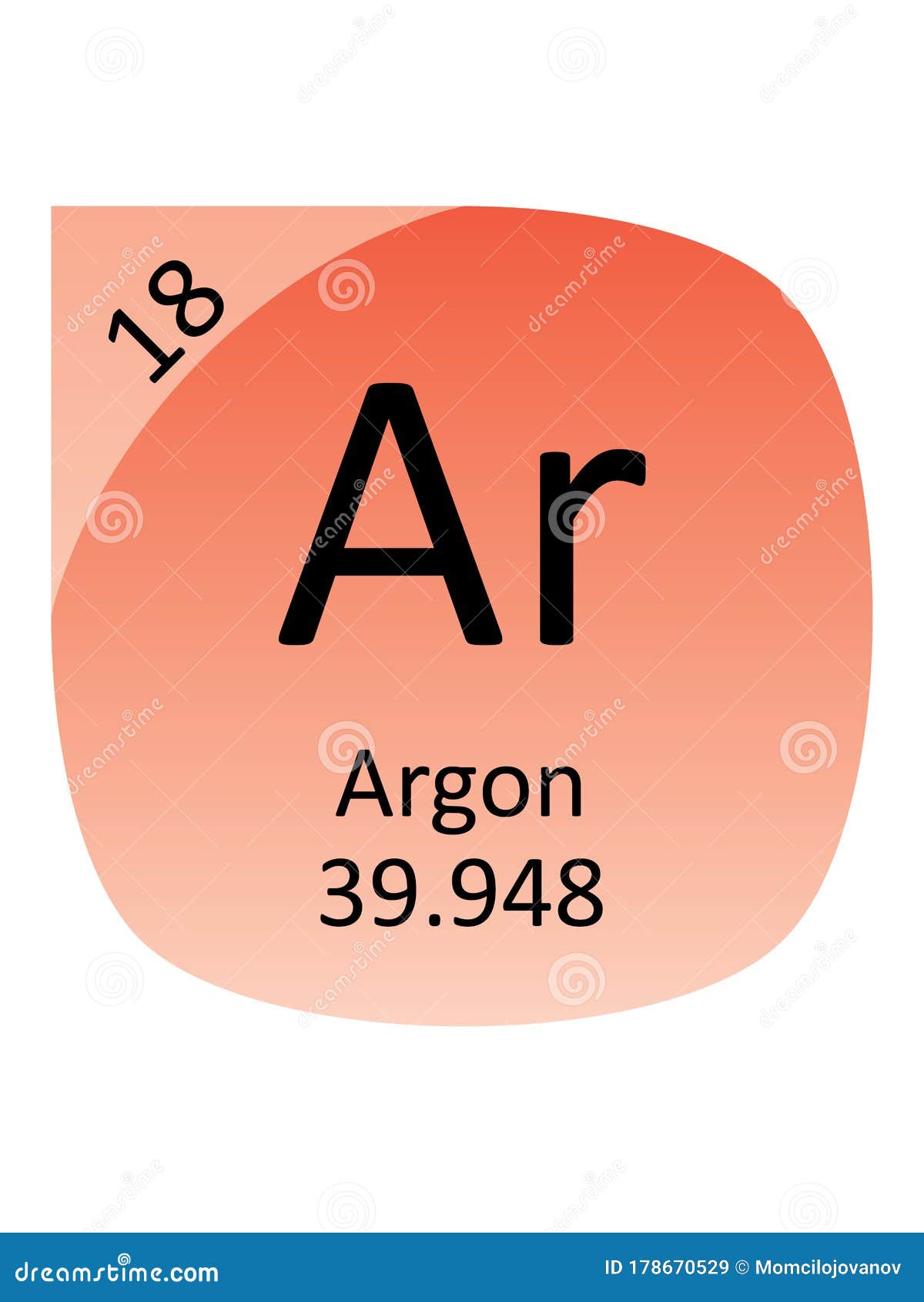| Isotope | Atomic mass (Da) | Isotopic abundance (amount fraction) |
|---|---|---|
| 36Ar | 35.967 5451(2) | [0.0000, 0.0207] |
| 38Ar | 37.962 732(2) | [0.000, 0.043] |
| 40Ar | 39.962 383 12(2) | [0.936, 1.000] |
- Atomic Mass Vs Atomic Number
- Element Ar
- Ar Atomic Number
- Element Ar Atomic Mass
- Ar Atomic Mass In Kg
- Ar Relative Atomic Mass
There is a difference between the meanings of the chemistry terms atomic mass and mass number.One is the average weight of an element and the other is the total number of nucleons in the atom's nucleus. Atomic Mass of Argon Atomic mass of Argon is 39.948 u.
- The most abundant isotope of argon in the universe is argon-36, which is made when stars with a mass about 11 times greater than the Sun are in their silicon-burning phase. In this phase, an alpha particle (helium nucleus) is added to a silicon-32 nucleus to make sulfur-34, which adds an alpha particle to become argon-36.
- Ar I Ground State 1s 2 2s 2 2p 6 3s 2 3p 6 1 S 0 Ionization energy 127109.842 cm-1 (15.759610 eV) Ref. VHU99 Ar II Ground State 1s 2 2s 2 2p 6 3s 2 3p 5 2 P° 3 / 2 Ionization energy 222848.3 cm-1 (27.62966 eV) Ref.
- Atomic mass of Argon is 39.948 u. The atomic mass is the mass of an atom. The atomic mass or relative isotopic mass refers to the mass of a single particle, and therefore is tied to a.
The atomic weight of argon is based on analyses of argon separated from air. In 1961, the Commissionchanged the recommended value of Ar(Ar) from 39.944, based on gas density measurements, to 39.948,based on the calibrated mass-spectrometric measurements reported by Nier.In 1979, the Commission examined the available literature and recommended Ar(Ar) = 39.948(1). This value of Ar(Ar) was one of the critical parameters to determinethe value of the universal gas constant R by acoustic methods.
In 2007, the Commission recommended value for the isotope-amount ratio of n(40Ar)/n(36Ar) in air, which isof importance in geochronology and geochemistry, as 298.56(31).

The isotopic composition and atomic weight of argon are variable in terrestrial materials. Those variations are a source of uncertainty in the assignment of standard properties for argon, but they provide useful information in many areas of science. Variations in the stable isotopic composition and atomic weight of argon are caused by several different processes, including
(1) isotope production from other elements by radioactive decay (radiogenic isotopes) or other nuclear transformations (e.g., nucleogenic isotopes), and
(2) isotopic fractionation by physical-chemical processes such as diffusion or phase equilibria.
Physical-chemical processes cause correlated mass-dependent variations in the argon isotope-amount ratios (40Ar/36Ar and 38Ar/36Ar), whereas nuclear transformation processes cause mass-independent variations. While atmospheric argon can serve as an abundant and homogeneous isotopic reference, deviations from the atmospheric isotopic ratios in other argon occurrences limit the precision with which a standard atomic weight can be given for argon. Published data indicate variation of argon atomic weights in normal terrestrial materials between 39.792 and 39.963. The upper bound of this interval is given by the atomic mass of 40Ar, as some samples contain almost pure radiogenic argon-40. The lower bound is derived from analyses of pitchblende (uranium mineral) containing large amounts of nucleogenic 36Ar and 38Ar. Within this interval, measurements of different isotope ratios (40Ar/36Ar or 38Ar/36Ar) at various levels of precision are widely used for studies in geochronology, water–rock interaction, atmospheric evolution, and other fields.
Radiogenic 40Ar is produced (along with 40Ca) by decay of a minor isotope of potassium (40K), whichhas a total half-life of 1.26(1) Ga. This radioactivity results in many geological samples havinganomalous amounts of 40Ar and is the basis of the K-Ar and Ar-Ar dating methods used in geochronology.Samples containing only minor components of noble gases from non-radiogenic sources may have Ar(Ar) values approachingthat of pure 40Ar. Owing to the wide distribution of potassium, even major sources of Ar suchas some natural gas deposits and geothermal reservoirs can have sufficiently high 40Ar concentrations.
In contrast, it is much less common for natural samples to have n(40Ar)/n(36Ar) ratios significantly less than that of air. Radiogenic 36Ar can accumulate by decay of 36Cl (half-life = 0.301(2) Ma), which in turn is produced from 35Cl by neutron capture associated with cosmic-ray interactions in the atmosphere and with U and Th decayin the solid earth. Similarly, 38Ar may accumulate as a result of reactions such as 37Cl(n,γ)38Cl or 35Cl(α,p)38Cl. Some samples of argon extracted from microscopic Cl-bearing inclusions in minerals have beenreported to have anomalously high concentrations of 36Ar and 38Ar that may be attributable to nucleogenesis.
Radioactive 37Ar and 39Ar are formed continuously in the atmosphere as products of cosmic-rayreactions, and they are components of cosmic dust entering the earth's atmosphere. Both isotopes alsoare formed by nuclear reactions on and beneath the earth's surface. At the present time, most of the new39Ar introduced to the atmosphere each year is from nuclear reactors. 39Ar decays to 39K with a half-lifeof 269 a; while 37Ar decays to 37Cl with a half-life of 35 days. The amounts of 37Ar and 39Ar innormal samples are variable and may be useful in environmental studies, but they are several orders ofmagnitude too small to affect the standard atomic weight of argon at its current level of reported uncertainty.
Variation in the terrestrial isotopic composition and atomic weight of argon by J.K. Böhlke. Pure Appl. Chem. 2014 (86) 1421-1432
CIAAW
Atomic Mass Vs Atomic Number
Argon
Ar(Ar) = [39.792, 39.963] since 2017
The name derives from the Greek argos for 'lazy' or 'inactive' because it does not combine with otherelements. It was discovered in 1894 by the Scottish chemist William Ramsay and the English physicistRobert John Strutt (Lord Rayleigh) in liquefied air. Rayleigh's initial interest derived from a problemposed by the English physicist Henry Cavendish in 1785, i.e., when oxygen and nitrogen were removedfrom air, there was an unknown residual gas remaining.
Element Ar
Natural variations of argon isotopic composition
For more information about the natural variations of the atomic weight of argon please read IUPAC Technical Report Variation in the terrestrial isotopic composition and atomic weight of argon by J.K. Böhlke. Pure Appl. Chem.86, 1421-1432 (2014).
- Formula: Ar
- Molecular weight: 39.948
- IUPAC Standard InChI:
- InChI=1S/Ar
- Download the identifier in a file.
- IUPAC Standard InChIKey:XKRFYHLGVUSROY-UHFFFAOYSA-N
- CAS Registry Number: 7440-37-1
- Chemical structure:
This structure is also available as a 2d Mol file - Other names:Ar;UN 1006;UN 1951;argon atom
- Permanent link for this species. Use this link for bookmarking this speciesfor future reference.
- Information on this page:
- Other data available:
- Reaction thermochemistry data:reactions 1 to 50,reactions 51 to 100,reactions 101 to 102
- Data at other public NIST sites:
- Options:
Data at NIST subscription sites:
NIST subscription sites provide data under theNIST Standard ReferenceData Program, but require an annual fee to access.The purpose of the fee is to recover costs associatedwith the development of data collections included insuch sites. Your institution may already be a subscriber.Follow the links above to find out more about the datain these sites and their terms of usage.
Mass spectrum (electron ionization)
Go To:Top, References, Notes
Data compilation copyrightby the U.S. Secretary of Commerce on behalf of the U.S.A.All rights reserved.
Ar Atomic Number
Data compiled by:NIST Mass Spectrometry Data Center, William E. Wallace, director

Spectrum
Notice: This spectrum may be better viewed with a Javascriptand HTML 5 enabled browser.
Help
The interactive spectrum display requires a browser with JavaScript andHTML 5 canvas support.
Select a region with data to zoom. Select a region with no data orclick the mouse on the plot to revert to the orginal display.
Credits

The following components were used in generating the plot:
- Plugins for Flot:
- Resize (distributed with Flot)
- Selection (distributedwith Flot)
- Labels(Modified by NIST for use in this application)
Additonal code used was developed at NIST:jcamp-dx.js andjcamp-plot.js.
Use or mention of technologies or programs in this web site is notintended to imply recommendation or endorsement by the NationalInstitute of Standards and Technology, nor is it intended to implythat these items are necessarily the best available for the purpose.
Additional Data
View image of digitizedspectrum (can be printed in landscape orientation).
View spectrum image in SVGformat.
Download spectrumin JCAMP-DX format.
Element Ar Atomic Mass
| Owner | NIST Mass Spectrometry Data Center Collection (C) 2014 copyright by the U.S. Secretary of Commerce on behalf of the United States of America. All rights reserved. |
|---|---|
| Origin | DOW CHEMICAL COMPANY / ASTM E14-UNCERTIFIED SPECTRUM 1 |
| NIST MS number | 34321 |
All mass spectra in this site (plus many more) areavailable from the NIST/EPA/NIH Mass Spectral Library.Please see the following for information about the library and its accompanying search program.
References
Go To:Top, Mass spectrum (electron ionization), Notes
Data compilation copyrightby the U.S. Secretary of Commerce on behalf of the U.S.A.All rights reserved.
No reference data available.
Notes
Ar Atomic Mass In Kg
Go To:Top, Mass spectrum (electron ionization), References
Ar Relative Atomic Mass
- Data from NIST Standard Reference Database 69:NIST Chemistry WebBook
- The National Institute of Standards and Technology (NIST)uses its best efforts to deliver a high quality copy of theDatabase and to verify that the data contained therein havebeen selected on the basis of sound scientific judgment.However, NIST makes no warranties to that effect, and NISTshall not be liable for any damage that may result fromerrors or omissions in the Database.
- Customer supportfor NIST Standard Reference Data products.
